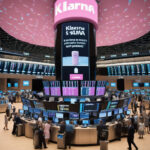In a world grappling with the impacts of climate change and habitat loss, innovative solutions to preserve biodiversity are more crucial than ever. Montreal’s Antenna project stands out as a pioneering initiative that harnesses artificial intelligence (AI) and imaging technology to tackle the declining insect populations and to identify new species in urban environments.
The project operates at the intersection of technology and ecology, aiming to monitor and preserve the biodiversity that is essential for healthy ecosystems. Insects, which play vital roles as pollinators, decomposers, and food sources for various wildlife, are experiencing significant declines globally. According to a study published in the journal Biological Conservation, nearly 50% of insect species are on the decrease. This decline threatens not only insect populations but also the entire web of life that depends on them.
The Antenna project leverages advanced machine learning algorithms to analyze images captured by automated cameras placed throughout Montreal’s parks and natural areas. This technology allows researchers to track insect populations over time and assess their health, behaviors, and interactions within their environments. By processing vast amounts of visual data quickly, the project can deliver real-time insights into the biodiversity present in these areas.
One of the standout features of the Antenna project is its identification of new insect species. The AI model is trained to recognize patterns that human researchers might overlook, thereby increasing the likelihood of discovering previously undocumented species. For instance, through its analyses, the project recently identified a rare butterfly species in a local park, a finding that could significantly influence conservation efforts in the region.
Incorporating AI in biodiversity monitoring not only enhances the efficiency of data collection but also frees researchers to focus on broader scientific inquiries. Traditional methods of insect monitoring often involve manual insect collection, which is labor-intensive and can disrupt the habitats being studied. In contrast, the Antenna project’s non-intrusive imaging approach allows for continuous monitoring without impacting the insect populations themselves.
Furthermore, the project acknowledges the importance of community involvement in fostering ecological stewardship. Citizens of Montreal are encouraged to participate by submitting their own images of insects they encounter in the urban landscape. This crowdsourced data enhances the project’s database, and the AI tool can subsequently analyze these citizen-contributed images, empowering the public to take part in scientific discovery.
Beyond its immediate ecological benefits, the Antenna project serves as a model for other cities grappling with biodiversity loss. By demonstrating how technology can be integrated into traditional conservation efforts, it provides a roadmap for urban nature preservation initiatives worldwide. The success of this project could inspire similar ventures in cities globally, triggering an essential shift in how urban spaces are perceived and managed in relation to wildlife.
The potential implications of the Antenna project extend beyond insects themselves. Healthy insect populations contribute to the pollination of plants, reduction of pests, and overall resiliency of urban ecosystems. As cities expand and natural habitats shrink, initiatives like this show how urban landscapes can be reimagined as spaces where nature not only survives but thrives.
Moreover, the data collected could play a crucial role in informing policymakers on the state of biodiversity in urban settings. In a climate that increasingly demands sustainability from governments and organizations, having grounded data on biodiversity would support more effective conservation policies and urban planning decisions. Through qualitative data correlating insect health with environmental conditions, decision-makers can implement targeted strategies to improve soil quality, vegetation, and overall ecological health in urbanized areas.
In conclusion, the Antenna project in Montreal exemplifies how modern technology—especially AI—can provide innovative solutions to pressing global issues like biodiversity loss. By harnessing digitization and citizen engagement, this project not only supports the conservation of urban ecosystems but also sets a precedent for future initiatives worldwide. As cities look to balance development with ecological mindfulness, strategies like the Antenna project prove that enhanced understanding through technology is not just beneficial, it is essential for the survival of our planet’s rich biodiversity.












